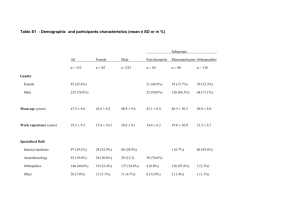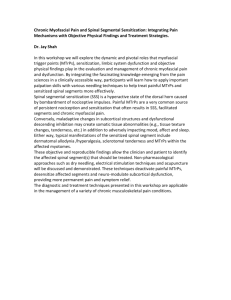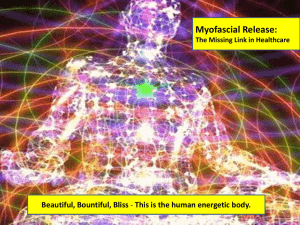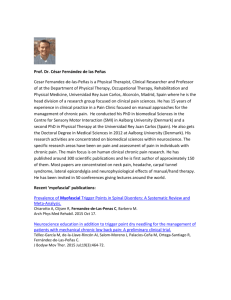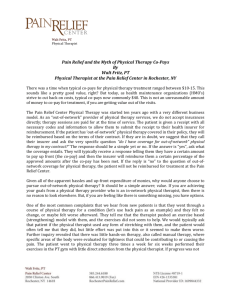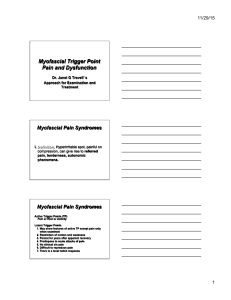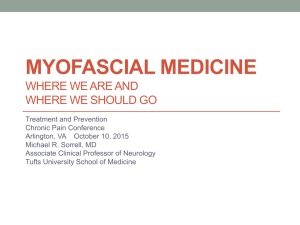The Lower Body – Course Learning Objectives
advertisement
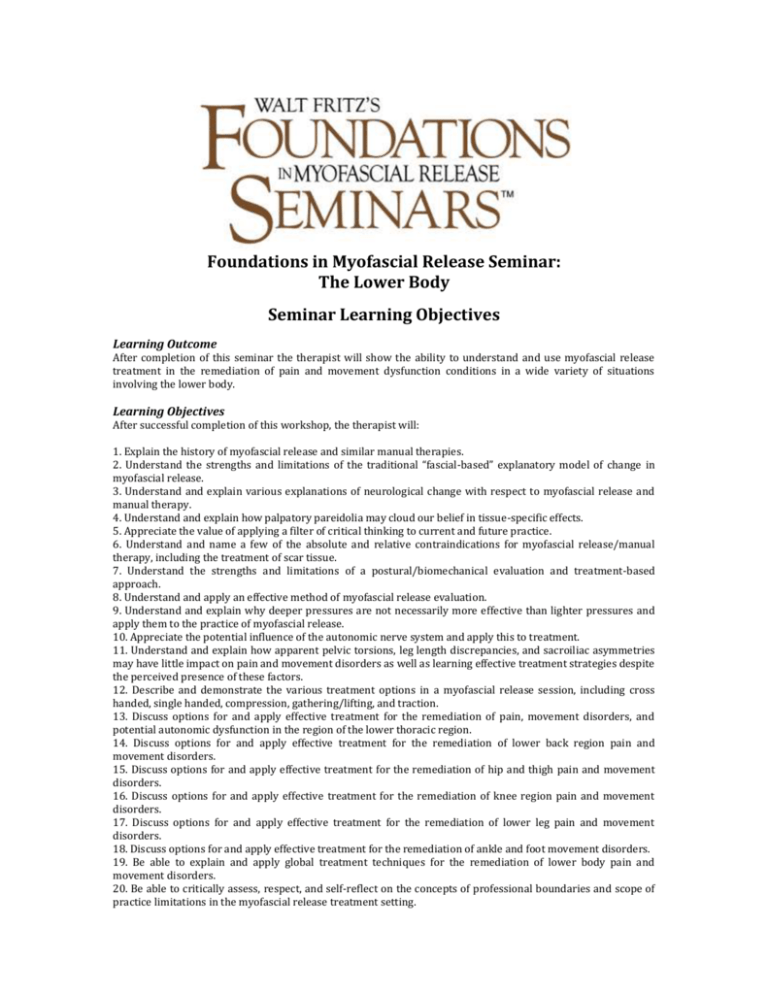
Foundations in Myofascial Release Seminar: The Lower Body Seminar Learning Objectives Learning Outcome After completion of this seminar the therapist will show the ability to understand and use myofascial release treatment in the remediation of pain and movement dysfunction conditions in a wide variety of situations involving the lower body. Learning Objectives After successful completion of this workshop, the therapist will: 1. Explain the history of myofascial release and similar manual therapies. 2. Understand the strengths and limitations of the traditional “fascial-based” explanatory model of change in myofascial release. 3. Understand and explain various explanations of neurological change with respect to myofascial release and manual therapy. 4. Understand and explain how palpatory pareidolia may cloud our belief in tissue-specific effects. 5. Appreciate the value of applying a filter of critical thinking to current and future practice. 6. Understand and name a few of the absolute and relative contraindications for myofascial release/manual therapy, including the treatment of scar tissue. 7. Understand the strengths and limitations of a postural/biomechanical evaluation and treatment-based approach. 8. Understand and apply an effective method of myofascial release evaluation. 9. Understand and explain why deeper pressures are not necessarily more effective than lighter pressures and apply them to the practice of myofascial release. 10. Appreciate the potential influence of the autonomic nerve system and apply this to treatment. 11. Understand and explain how apparent pelvic torsions, leg length discrepancies, and sacroiliac asymmetries may have little impact on pain and movement disorders as well as learning effective treatment strategies despite the perceived presence of these factors. 12. Describe and demonstrate the various treatment options in a myofascial release session, including cross handed, single handed, compression, gathering/lifting, and traction. 13. Discuss options for and apply effective treatment for the remediation of pain, movement disorders, and potential autonomic dysfunction in the region of the lower thoracic region. 14. Discuss options for and apply effective treatment for the remediation of lower back region pain and movement disorders. 15. Discuss options for and apply effective treatment for the remediation of hip and thigh pain and movement disorders. 16. Discuss options for and apply effective treatment for the remediation of knee region pain and movement disorders. 17. Discuss options for and apply effective treatment for the remediation of lower leg pain and movement disorders. 18. Discuss options for and apply effective treatment for the remediation of ankle and foot movement disorders. 19. Be able to explain and apply global treatment techniques for the remediation of lower body pain and movement disorders. 20. Be able to critically assess, respect, and self-reflect on the concepts of professional boundaries and scope of practice limitations in the myofascial release treatment setting.

